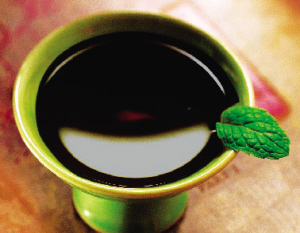Rainy days can leave many people feeling down or experiencing physical discomforts like poor appetite, bloating, or even skin rashes. These symptoms could be a sign that “dampness” is at work in your body.
What Is Dampness?
In Traditional Chinese Medicine (TCM), dampness is an external pathogenic factor that is heavy, sticky, and tends to move downward. It is described as an insidious condition that can combine with cold (cold-dampness), heat (damp-heat), or wind (wind-dampness), leading to a range of health issues. An old saying emphasizes, “Cold is easy to dispel, but dampness is hard to remove.” This highlights how persistent dampness can be.
How to Identify Dampness in the Body
- Energy Levels: Persistent fatigue, feeling lethargic despite sufficient sleep, or a sensation of heaviness in the limbs can indicate dampness.
- Appearance: Puffy eyes or a thick, greasy coating on the tongue may also signal internal dampness.
- Digestive Issues: A constant feeling of nausea, a bitter or sticky taste in the mouth, bloating, or a sensation of phlegm stuck in the throat can all be related.
- Stool Consistency: Stools that stick to the toilet bowl or require excessive wiping may also point to dampness.
Tips for Removing Dampness
- Maintain a Dry Environment: Avoid prolonged exposure to damp places and ensure your living space is well-ventilated and dry. Do not wear clothes that haven’t fully dried or sleep with wet hair. On rainy days, try to limit outdoor activities that involve exposure to water.
- Stay Warm: Coldness can exacerbate dampness, so it is important to keep warm. Avoid sitting on cold floors and limit consumption of raw or cold foods that can impair digestion.
- Strengthen the Spleen:In TCM, the spleen plays a key role in processing and transforming fluids, making it essential for removing dampness. Eating lightly and incorporating foods like red bean and coix seed soup, poria and Chinese yam stew, or fox nut and coix seed tea can help.
- Exercise Regularly:Physical activity promotes blood circulation and helps with water metabolism, facilitating the elimination of dampness through sweat. However, exercise should be moderate; light sweating is most effective for clearing dampness.
- Massaging acupressure points such as Chengshan (BL57) or Fenglong (ST40) on your legs can aid in removing excess dampness.
- Try to use acupucnture or herbal medicine to help remove dampness.
Incorporating these tips into your daily life can help manage and remove dampness, especially during rainy seasons. For chronic or severe symptoms, it’s important to consult with a qualified TCM practitioner for personalized guidance.
For more information, please contact our Chatswood clinic or find more details on mingyitang.com.au




